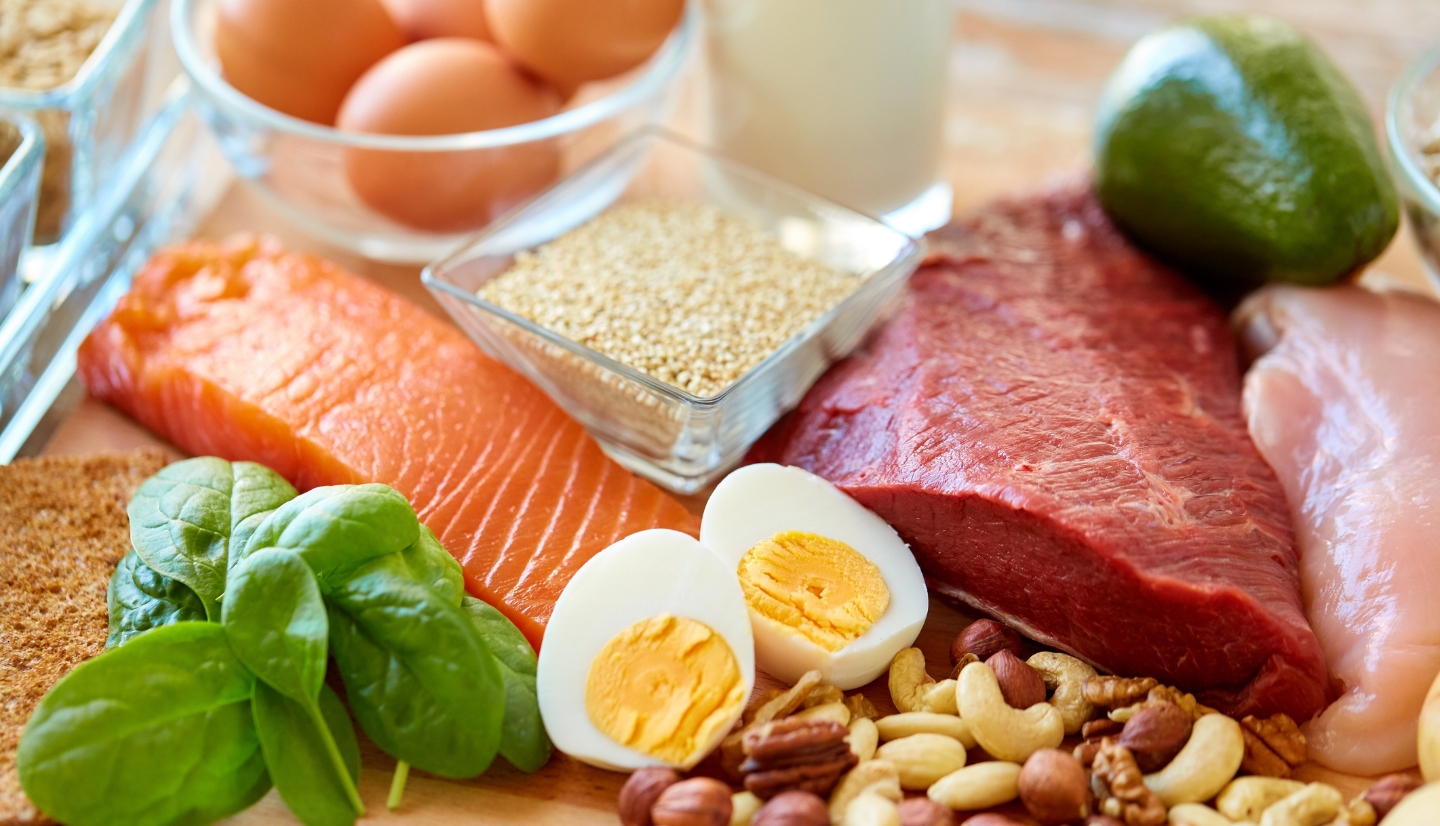
Proteins are the body’s building blocks, essential for life. They make up bones, cartilage, muscles, blood, skin, enzymes, hormones, and vitamins. They help repair and build cells and tissues, support blood clotting and fluid balance, and keep the immune system strong. In short, protein isn’t just for athletes – it’s vital for everyone. Knowing your daily protein needs can help you stay healthy, energized, and balanced.
Proteins are made from amino acids, much like words are built from letters. While your body can create some amino acids on its own, nine “essential amino acids” must come from food.
For most adults, the Recommended Dietary Allowance (RDA) is 0.8 grams of protein per kilogram of body weight (0.36g per pound).
For example:
Protein needs may increase with activity, pregnancy, or breastfeeding. For most healthy adults, exceeding 2 grams per kilogram (about 125 grams a day for a 140-pound person) isn’t recommended and can lead to dietary imbalance or health concerns.
It’s best to get your daily protein needs from whole foods rather than powders and bars. Here’s a simple guide:
Including a variety ensures you get not just protein, but also fiber, vitamins, and minerals.
The American Heart Association emphasizes lean protein, healthy fats, and plant-forward eating. Try these ideas:
For balance, the Mediterranean diet remains one of the best models. It emphasizes whole grains, fruits, vegetables, nuts, and legumes, while incorporating moderate amounts of fish, poultry, and dairy. Red meat is limited. This eating pattern not only meets daily protein needs, but also supports long-term heart health.
More isn’t always better. Excessive protein may crowd out healthy carbohydrates and fats, leading to imbalance. Eating more protein than your body uses can also contribute to weight gain if activity levels stay the same.
For those with pre-existing kidney issues, a high-protein diet may increase the risk of kidney stones or strain kidney function – especially when animal proteins dominate the diet. Balance is the key to protecting long-term health.
• Choose lean proteins: Fish, skinless poultry, beans, lentils, tofu, and low-fat dairy.
• Add more plant-based options: Nuts, seeds, and legumes provide protein plus fiber.
• Avoid processed meats: Deli meats, bacon, and sausages often come with excess sodium and saturated fat.
• Cook light: Grilling, baking, broiling, or stir-frying helps keep meals healthy.
• Season well: Use herbs, spices, garlic, and onion instead of excess salt.
Protein is vital, but knowing your daily protein needs ensures you get the right amount —not too little, not too much. Focus on variety, lean sources, and plant-forward meals to keep your diet balanced. By following heart-healthy, Mediterranean-inspired eating habits, you’ll not only meet your protein goals but also support your overall wellness for years to come.
Sources:
Food Smart Colorado – Colorado State University Extension
•Provided guidance on calculating daily protein needs (grams per kilogram/pound).
• Source for the Recommended Dietary Allowance (RDA) and protein intake chart.
Johns Hopkins Bayview Medical Center – Clinical Nutrition Department
• Source for protein content in common foods (e.g., 7 grams of protein per ounce of meat/fish).
American Heart Association (AHA)
• Recommendations on lean protein
sources, plant-forward eating, and h